Category: By Grade
- Home
- /
- Shop
- /
- By Subject
- /
- Science
- /
- By Grade
- /
- Page 10
Showing 181–200 of 257 resultsSorted by latest
-
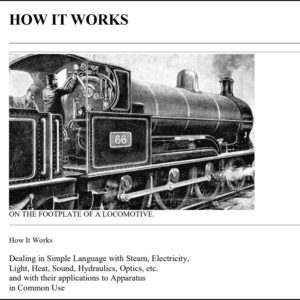 $2.00Buy Now
$2.00Buy NowThis is a downloadable copy of the book. (279 pages)
About the book: This out-of-print book will give students details ‘in simple language’ (and illustrations) dealing with steam, electricity, light, heat, sound, hydraulics, optics and other apparatus. (See more in description below) -
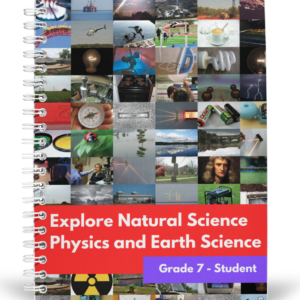 $15.00Buy Now
$15.00Buy NowThis physics and earth science student textbook is designed to use with middle school students (specifically those learning at or ready for 7th grade work). View the table of contents in the description below. Preview video here.
Get the TEACHER’S EDITION here!
Bundle and Save: 7th Grade Science Curriculum Bundle
-
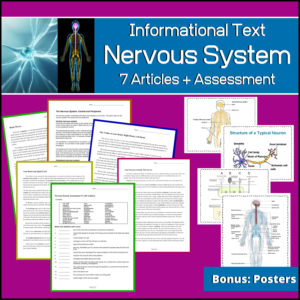 $6.00Buy Now
$6.00Buy NowThis ANATOMY / BIOLOGY / HEALTH resource contains 7 informational text articles (each with comprehension questions followings), 2 end of unit assessments and 4 bonus posters! These articles can be used in any Science related class or in a Language Arts / Reading classroom. Use as standalone mini-lessons or as supplemental activities, homework or in centers.
Flesch-Kincaid Grade Levels for articles range from 5.1 – 7.4
-
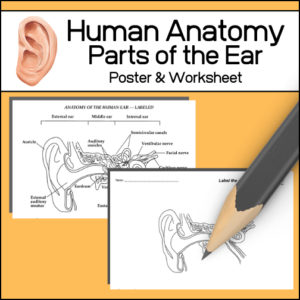 $1.50Buy Now
$1.50Buy NowStudying the human ear? This resource includes…
- – Poster with the following parts labeled (auricle, auditory ossicles, semicircular canals, vestibule nerve, facial nerve, cochlear nerve cochlea, vestibule, eardrum, Eustachian tube, external auditory meatus)
- – Student worksheet to label
-
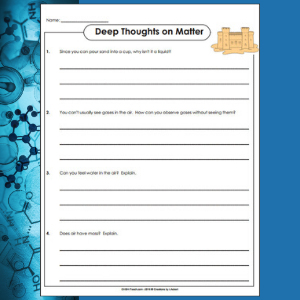 $0.50Buy Now
$0.50Buy NowTaking what they already know about ‘matter’, this one page worksheet will require students to ‘think deeply’ (using critical thinking skills) to answer questions. Answer key also included.
-
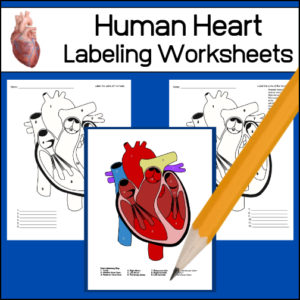 $1.00Buy Now
$1.00Buy NowTwo worksheets for students to label of the human heart. One with a word bank and one without. Answer key provided.
-
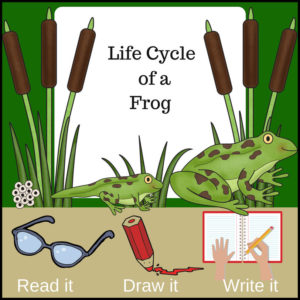 $2.00Buy Now
$2.00Buy NowThis cross-curricular (Science / Literacy – Writing ) product will have students creating their very own mini-books detailing the life cycle of a frog!
Knowledge students will learn:
The book will begin with the female frog laying her eggs near or in water. Students will then learn about the tadpole, what it looks like and what it eats and how it grows and turns into a froglet. They will learn how the froglet has developed the ability to breathe and live on land and then turns into a frog. Does a frog eat different things than a tadpole? Students will find out! At the end of the unit, there is also a coloring page of the different stages from egg to frog.
Students will: — read the text — draw a picture — write (copy) the written text
-
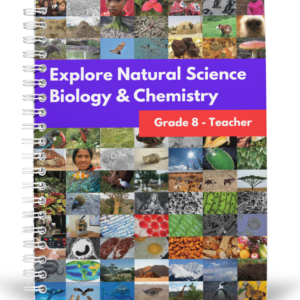 $15.00Buy Now
$15.00Buy NowThis is the teacher’s edition to Natural Science: Biology & Chemistry – Grade 8 (Student Edition)
Watch a video preview of the matching student textbook here.
Bundle and Save: 8th Grade Science Curriculum Bundle
-
 $2.50Buy Now
$2.50Buy NowStudying ‘The force of Friction‘ in your classroom? This Mini-Lessons resource has been designed to help students gain a greater understanding as well as to help them retain the information they are learning!
-
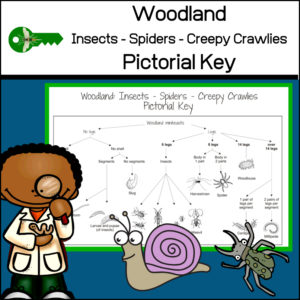 $1.25Buy Now
$1.25Buy NowStudents love entomology! What is that bug? Some may use the term MINI-BEAST. Is it an insect, a spider, a slug? “I found this bug in the woods, but what is it called?” To help answer student questions like these, here is an easy to use PICTORIAL IDENTIFICATION KEY!
Woodland minibeasts included on this picture guide: snail, worm, larvae (pupae), slug, beetle, earwig, aphid, weevil, harvestman, spider, woodlouse, centipede and millipede (all common creepy crawlies found in the woods)
-
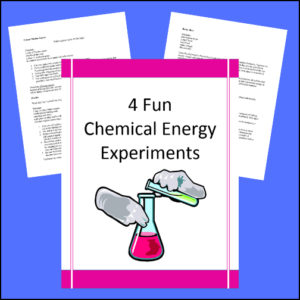 $1.00Buy Now
$1.00Buy NowChemical Energy is released when bonds form in a chemical reaction, often producing heat as a by-product (exothermic reaction).
Here are four experiments for students to perform which display chemical energy! Experiments include:
1. Rusty Heat
2. Easy Endothermic Reaction
3. Classic Mentos Geyser
4. Hot Ice -
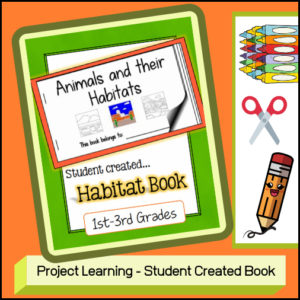 $2.50Buy Now
$2.50Buy NowHands-on learning! Students will create their own mini-book while learning about 8 different habitats, animals that live in those habitats and what animals need to survive in their habitats!
-
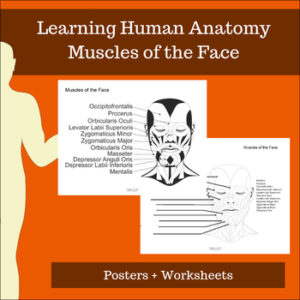 $2.00Buy Now
$2.00Buy NowMuscles of the Face – Learning Human Anatomy will be exactly what you need if you are looking for a easy to read posters as well as a labeling worksheet for students.
This resource actually comes with two worksheets, one with and one without terms. (You choose if you want your students to completely remember the names or if they need the terms to help them. )
-
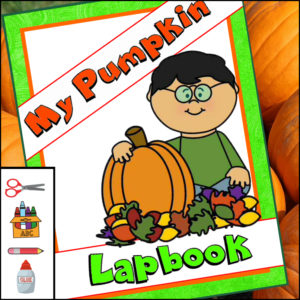 $3.00Buy Now
$3.00Buy NowThis interactive unit for students will allow them to create a cute LAPBOOK about PUMPKINS! Great to use anytime, especially in October or November during the Fall Holidays.
See description below for more details on this resource AND suggested uses.
-
 $0.50Buy Now
$0.50Buy NowHere is a worksheet for students to use when the are learning about volcanoes! KWL worksheets are to be used at the beginning and end of any study.
K – What I know (Students list everything they already know – prior knowledge)
W – What I want to learn (Students begin thinking about what they don’t know and what they want to investigate about the given topic…i.e. volcanoes!)
L – What I’ve learned (After the study is complete, students will complete this section giving details about what ‘new’ things they have learned)
There is also a section for students to reveal what the most ‘interesting’ fact was that they learned. Your students will love the reflection and enjoy sharing their answers.
-
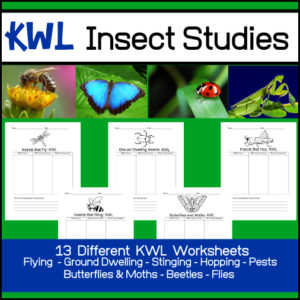 $3.00Buy Now
$3.00Buy NowWant student to investigate a variety of different types of insects? This K-W-L resource includes 13 different KWL worksheets so that students (individually or in cooperative groups) can use as they study different bugs and creepy crawlies. Perhaps they want (or you want) the focus to be on insects that hop or ground dwelling insects. What if their study should focus on beetles only or butterflies and moths? Not only will you get worksheets for a variety of specified ‘types’ of insects but I’ve also included some that can be tailor designed to what you or your students choose to study!
-
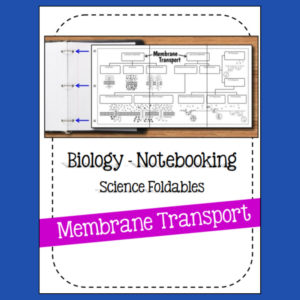 $3.00Buy Now
$3.00Buy NowHigh School Biology Notebook resource!
Students will learn all about the cell membrane. Terms include: phospholipid, phospholipid bilayer, integral protein, peripheral protein, cholesterol, glycolipid, oligosaccharide/sugar chain, glycoprotein, transport, attachment and recognition, receptor for signalling, enzymatic activities
-
 $2.50Buy Now
$2.50Buy NowThis 1st / 2nd Grade Science resource provides posters, handouts and center activities to help students learn about the life cycle of a frog! Seven stages are shown and pages come in color and b/w.
Easy to use and differentiated (Based on student ability – Easiest: Color the life cycle / Medium: Color, cut and paste the life cycle / Hardest: Draw the life cycle)
-
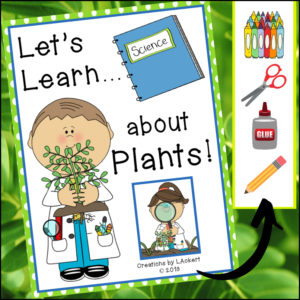 $6.00Buy Now
$6.00Buy NowLet’s Learn about Plants is a Science resource that can be used in conjunction with your own curriculum or as a separate – individual unit! Students will be actively learning as the cut, color, paste, write and learn! They will learn about the parts of a plant and the life cycle!
Plant vocabulary: seed, sprout, seedling, plant, roots, stem, leaf, soil, sunlight, water, air, flower, bud, trunk, branch, crown.
-
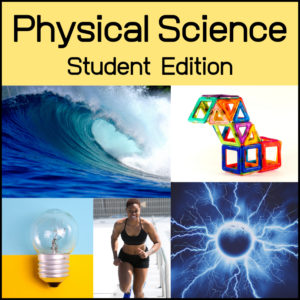 $9.99Buy Now
$9.99Buy NowPhysical Science is the study of the inorganic world. It is ordinarily thought of as consisting of four broad areas: astronomy, physics, chemistry, and the Earth sciences. This textbook is a full-year Physical Science curriculum (356 pages) and can be used in Middle or High School.

